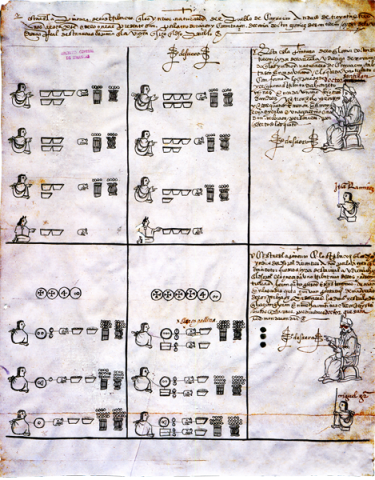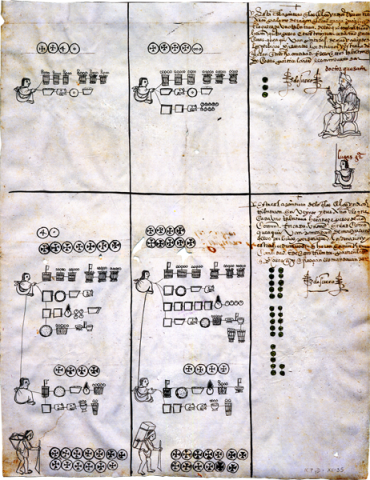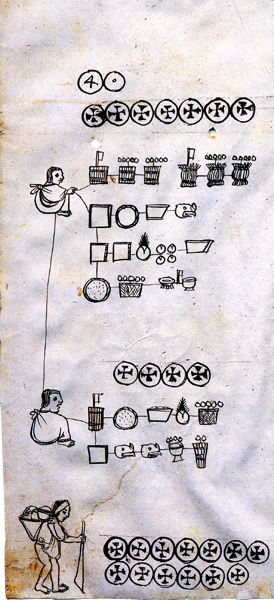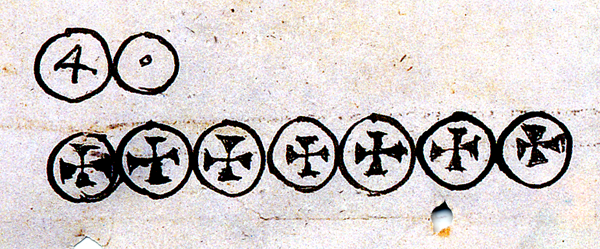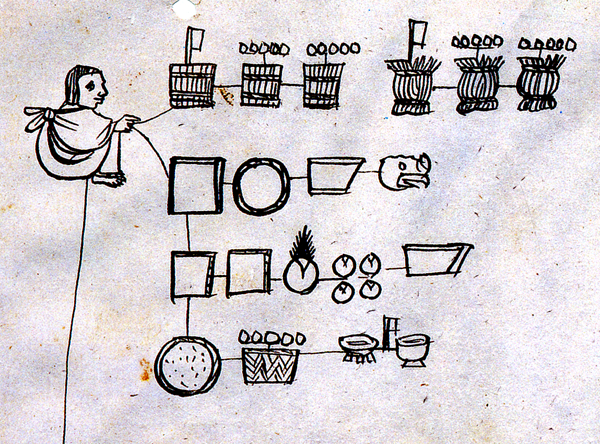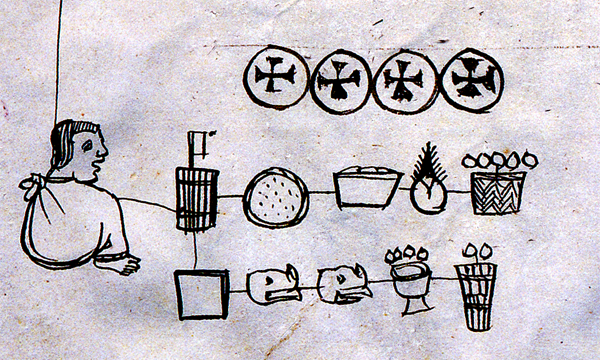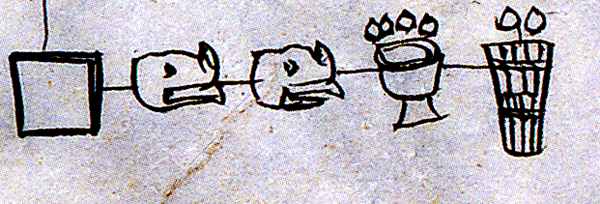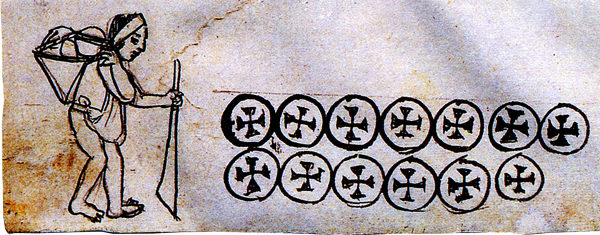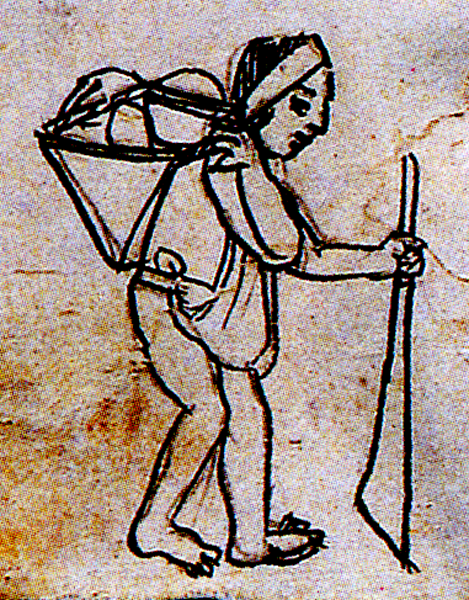This manuscript is an accounting of tributes paid by the indigenous communities of Tacubaya and Coyoacan to Spanish officials in the middle of the sixteenth century. The original is located in the Archivo General de Simancas, which has kindly granted the Wired Humanities Project permission to reproduce it for the Mapas Project. The manuscript is divided by vertical and horizontal lines, highlighting which indigenous authority was responsible to pay what and to which Spanish oidor (featuring Santillán and Quesada). Tributes are both in coin and in kind. The merchandise, such as cacao beans, cloth, firewood, grains, and more, is represented pictographically, with an indication of the quantities. Spanish-language texts (in more than one hand) accompany the images and explain some of the tribute arrangements. One of the notaries is a man named Pedro de Suero. ---------- Paleography and translation are being contributed by a number of people. Cristina Cruz-Uribe has contributed the regularized Spanish transcriptions of the main text blocks. She and Adriana Teresa Da Silva Arellano have contributed the English translations. The lead scholar on the project is Juan José Batalla Rosado. (Stephanie Wood)
Coyoacán, Códice Tributos de
Principal editor:
Stephanie Wood
